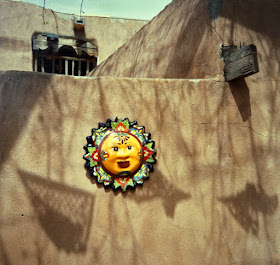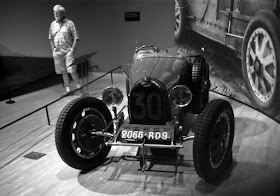Pages
Thursday, March 26, 2020
Things are sometimes not as they seem.
There are some signs of Spring, however, which precede those developments.
Many people start coughing as the local junipers start producing berries. My own awareness of the season is awakened by the light of the sun which comes streaming in my east window as the sun moves northward.
(The tousled morning hair is real. The facial features are refractive artifacts from my glasses as I sit at my computer catching up on the day's news.)
Albuquerque's streets, like those of many other towns, are mostly empty. Of course, that has its upside. Walking and biking are pleasant ways to pass the time. Yesterday, I got to take a long ride beside the river with three lovely ladies. How good is that?
Last Sunday our local film photography group met on line using the Google Hangouts conferencing program. The session went pretty smoothly for a first try. The face to face meetings typically feature little in the way of an agenda. We usually just start off by going around the group to hear what people have been up to with their photography over the preceding month. That is pretty much the way it went in the on line experience. We are going try another on line meeting on the first Sunday of next month.
Tuesday, March 24, 2020
Flickr
One of the non-film photography accounts I have added recently to my follow list is that of the Biodiversity Heritage Library which provides several views daily from the collection of illustrations from natural history journals published in the centuries prior to the invention of photography. The digital copies of the illustrations are presented at a high enough resolution to allow the making of good sized prints if desired. I do not have a color printer any longer to take advantage of that opportunity, but I do occasionally save a copy to my hard drive to use as a desktop background. My IMAC desktop is currently home to a wonderful drawing of a carp made in the 18th Century.
Monday, March 23, 2020
Walking the Dog
The Vivitar Ultra Wide and Slim if often along for the trip, even if I have another camera hanging from a neck strap. The thing I always have to remind myself about is the need to frame very tightly because the Vivitar's viewfinder only shows about 75% of what is going to be on the film.
Monday, March 16, 2020
6x4.5
I recently shot a roll of HP5 in my Duo Six-20 that has a Tessar lens and a Compur shutter with a 1/300 top speed. That 3.5/70mm Tessar is a bit inconsistent in its results, possibly due to the fact that it is uncoated, though I have gotten better and more consistent pictures in regard to sharpness and contrast with the same lens on my older Model I.
My liking for the Duo Six-20 got me started re-rolling 120 rollfilm onto 620 reels. That turned out to be a lot simpler than I had imagined for a long time, and it only takes me a few minutes now to get ready for an outing with the camera.
It has been a while since I shot any of my fully manual cameras and I'm finding I have gotten a bit careless in making sure I have focus, aperture and shutter all properly set before making an exposure. There is also the issue of getting the frame spacing correct through the ruby windows when most modern paper-backed films have frame numerals that can only be seen dimly in bright ambient light. However, those are all issues which get resolved with more frequent use.
Thursday, March 12, 2020
2926
I made these shots with a Minolta Celtic 2.8/28mm on HP5 and processed in LegacyPro L110b. The overcast sky provided particularly good light for this subject, and the wide-angle lens along with the fast film ensured good depth of focus.
Tuesday, March 10, 2020
Sunday, March 08, 2020
Museum Pieces
In the upstairs photo gallery there was an Ansel Adams exhibit. The point of the exhibit was a demonstration of how Adams created differing versions of images from the same negatives by cropping, dodging and burning. That is not surprising for photographers, but I think it was probably instructive for people not familiar with photo processing techniques. The most dramatic example of Adams' skill was his famous Moonrise, Hernandez, New Mexico print which looked very bland before he darkened the sky and burned in the details of the clouds.
It seems there is always at least one big mistake in the captions that accompany any large exhibit like this Adams show. In this case it involved a portrait of Alfred Stieglitz made by Adams in the late 1930s. The caption correctly stated that Adams made the picture with a Contax I 35mm rangefinder, but then asserted that the image which was about 8x10 was a contact print!
( 3/24/25: On giving this some more thought, there is a possibility of the image having been produced as a contact print if an enlarged internegative was made in the same way Weston usually made 8x10 prints from smaller medium-format negatives.)
 |
| Stieglitz by Adams |
 |
| Adams by Weston |

































